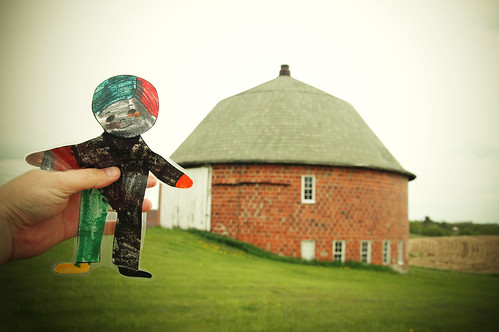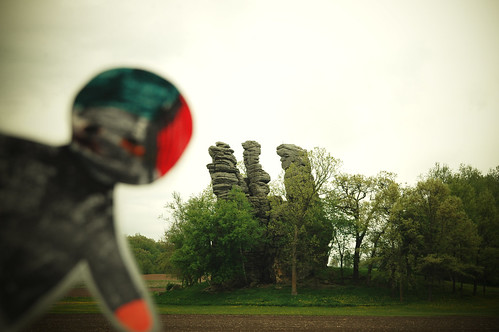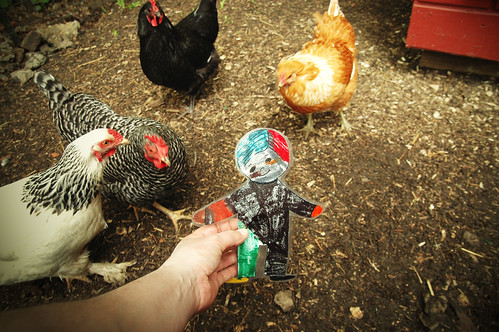this is a series of photos documenting a few scenes in the driftless region for a niece in maine who is participating in the flat stanley project.
in our trip about the region flat stanley first visited one of the many round barns in the area. from 1880-1920 progressive agricultural colleges attempted to popularize round barns on the basis that they had a greater volume-to-surface ratio than a square shaped barn and were therefore cheaper to construct. but standardization of the construction industry and mechanization of american agriculture ( i.e. it’s easier to park you shiny, new combine in a square barn ) quickly minimized any efficiencies gained. although no new round barns have been built in the area for nearly 80 years, vernon county, wisconsin has more of standing round barns than any other county in the united states.
some old timers say the real reason the barns were round was so the farmers didn’t have a corner to pee in
unlike much of the rest of the region, the area of southwestern wisconsin, southeastern minnesota, northeastern iowa and northwestern illinois were not covered in 2 miles thick glaciers during the glaciation in the last ice age. the region is known collectively as the driftless region because it lacks of glacial drift which is the material left behind continental glaciers.
the region is also known for its deeply carved river valleys and rolling hills, bluffs and coulees which remained untouched by the advancing glaciers which drastically changed the landscape of northern north america during the wisconsinan glaciation.
the region gives hints as to what things looked like over 100 million years ago when it was formed and was a vast prehistoric sea, with an underwater mountain range. you can still see the remnants of the ancient seafloor in curious formations such as this one known as the “The Three Chimney’s”.
you can just see a bit of a farm field in front of the formation which is appropriate because the lack of glaciation means the area is noted for it’s ancient, rich soil which has supported over a century of farming, and is particularly beloved by those who practice organic farming methods. this might explain why wisconsin has the highest number of organic farmers of any state in the country and why vernon country where this photo was taken, right in the heart of the driftless region, has the highest number of organic farmers of any county in wisconsin.
wisconsin’s western border is the mighty mississippi river which, at 2,320 miles, is the largest river system in north america. the river starts a bit north of the driftless region in lake itasca minnesota and flows south past towns like la crosse wisconsin before eventually emptying into the gulf of mexico.
also in la crosse, wisconsin you’ll find grandad bluff which provides a fantastic view westward over the mississippi and eastern minnessota.
mark twain mentions the bluff in his book “life on the mississippi” which chronicles his time as a steamboat pilot on the mississippi.
just a few hours after flat stanley and i were standing on the top of grandad bluff, a tornado went through the south side of la crosse ( the left side of this panorama ) and did quite a bit of damage.
laura ingalls wilder who wrote little house on the prairie series was born was born a little bit north of where we were traveling, in pepin wisconsin and while flat stanley didn’t get a chance to go her hometown, he did get to visit some of the backyard chickens who live in the photographer’s backyard perhaps because he read “Little House in the Big Woods” one too many times to his own son 





Well done Snowdeal, well done! Thank you sooo much
I love the picture of the backyard chickens. The chicken are so interested into what the object is. Very curious little fellas.
I like the flat Stan in front of the chickens. It reminds me of the chicken farm that I have. I have a blog at http://kernschickenfarm.com which is about helping people raise backyard chickens.